Nexia contact group diagram. Unloaded the contact group
Today I took up unloading the CG as I wanted, did it for 5 hours, nothing complicated, whoever has the hands and the desire, do it, there will be fewer problems with the car. Thank you maxxx090.
On Nexias, the contact group of the ignition switch quite often burns out. we will try to find out what is the cause of the burnout and how to repair the contact group.
What are the symptoms of a burnt Nexia contact group? Most often, when the key is turned in the ignition, the starter does not turn.
A new contact group of the ignition lock costs about 600 rubles. (code in exist.ru - 530395, analogue - 93741069), the cost of repairs is about 100-200 rubles. (replacement of the contact group)
But replacing the contact group will not help for long - after a while the new contact group will start to warm up in the same way and will require a similar repair
First, remove the contact group of the ignition switch
On the contact group of the Nexia ignition lock there are 5 contacts:
"30" - battery powered
"15" - ignition
"15a" - stove fan
"50" - starter
"Kb" ("Ka") - radio
On sale there is a contact group for Nexia with 6 contacts (in addition to those described above - contact "R").
Connection of contacts of the contact group at different positions of the ignition key:
Initial key position "I": "30"+"R"
Initial position of the key "I" + the key is recessed into the ignition lock: "30" + "R" + "Ka"
Position "II": "30"+"Ka"
Position "III" "30"+"Ka"+"15a"+"15"
Starter position: "30"+"50"+"15"+"Ka"
Why does the contact group burn out on the Nexia?
The answer is simple: from terminal "30" to terminal "15" when the ignition is on, there is a strong load, and when the starter is turned on from terminal "30" to terminal "50", an additional powerful load appears. Thus, a high power current flows through contact "30", which leads to overheating and melting of this contact. Contact "15a" has little effect on the burnout of the contact group, since power is supplied through it to the first three speeds of the stove, while the 4th speed goes through a separate relay.
How to avoid burnout of the contact group on the Nexia?
The problem of burnout of the contact group on the Nexia can be solved by installing additional unloading relays. IN this material the algorithm for installing the unloading relay on the group "30" - "15" is given, but if desired, you can install the relay on the group "30" - "50" by analogy. As practice shows, often unloading "30" - "15" is enough to forget about the repair of the contact group forever
We buy in advance:
Starter relay from VAZ-2108 (at 30 A) or even better from VAZ-2110 (at 50 A), the cost is about 50 rubles.
Relay block - 20 rubles.
Terminals "mother" for the relay (4 pcs) - 4 rubles.
Red wire 0.5 m long - 10 rubles.
Black wire 0.5 m long - 10 rubles.
Screw terminal (1 pc) - 1 rub.
Insulating tape - 25 rubles.
1. From the connector of the contact group, we take out the wires of contacts 30 and 15 together with the terminals, and we hook them to contacts 30 and 87 (respectively)
2. To wire 30 at the terminal inserted into the relay, solder a wire 25 cm long, crimp the terminal on the second end of this wire and insert it into socket 30 of the connector of the contact group
3. Another wire 25 cm long with terminals crimped on both sides, insert one end into contact 85 of the relay, the other into socket 15 of the connector of the contact group
4. We crimp the wire, preferably black, on one side with a terminal, which we attach to contact 86 of the relay, crimp the other end of this wire with a screw terminal and attach it securely to the mass (body) of the car.
5. We wrap the resulting wiring harness with electrical tape. We remove the relay under the panel so that it is accessible and can be reached from below from under the panel. We attach the plug of the contact group of the ignition lock to the contact group itself. If all connections to the relay are made using the relay connector (block), then there will be fewer problems during installation and replacement.
Now all the current to consumers will be directed not through the contact group of the ignition switch, but through the relay. Accordingly, the contact group will no longer overheat and melt!
Information taken from this site www.nexia-faq.ru/remont/kontakt-group.html. Thank you for your attention and happy new year friends.
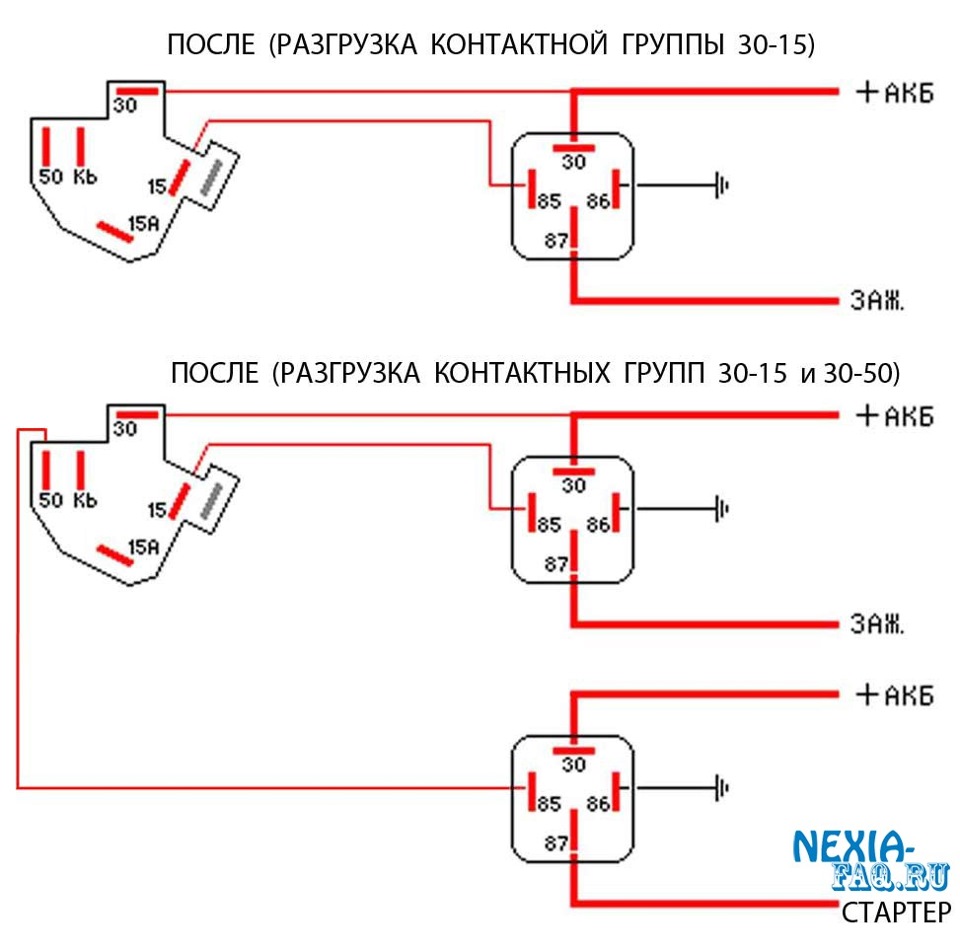
Today I took up unloading the CG as I wanted, did it for 5 hours, nothing complicated, whoever has the hands and the desire, do it, there will be fewer problems with the car. Thank you maxxx090.
On Nexias, the contact group of the ignition switch quite often burns out. we will try to find out what is the cause of the burnout and how to repair the contact group.
What are the symptoms of a burnt Nexia contact group? Most often, when the key is turned in the ignition, the starter does not turn.
A new contact group of the ignition lock costs about 600 rubles. (code in exist.ru - 530395, analogue - 93741069), the cost of repairs is about 100-200 rubles. (replacement of the contact group)
But replacing the contact group will not help for long - after a while the new contact group will start to warm up in the same way and will require a similar repair
First, remove the contact group of the ignition switch
On the contact group of the Nexia ignition lock there are 5 contacts:
"30" - battery powered
"15" - ignition
"15a" - stove fan
"50" - starter
"Kb" ("Ka") - radio
On sale there is a contact group for Nexia with 6 contacts (in addition to those described above - contact "R").
Connection of contacts of the contact group at different positions of the ignition key:
Initial key position "I": "30"+"R"
Initial position of the key "I" + the key is recessed into the ignition lock: "30" + "R" + "Ka"
Position "II": "30"+"Ka"
Position "III" "30"+"Ka"+"15a"+"15"
Starter position: "30"+"50"+"15"+"Ka"
Why does the contact group burn out on the Nexia?
The answer is simple: from terminal "30" to terminal "15" when the ignition is on, there is a strong load, and when the starter is turned on from terminal "30" to terminal "50", an additional powerful load appears. Thus, a high power current flows through contact "30", which leads to overheating and melting of this contact. Contact "15a" has little effect on the burnout of the contact group, since power is supplied through it to the first three speeds of the stove, while the 4th speed goes through a separate relay.
How to avoid burnout of the contact group on the Nexia?
The problem of burnout of the contact group on the Nexia can be solved by installing additional unloading relays. This material provides an algorithm for installing an unloading relay on the group "30" - "15", but if desired, you can install the relay on the group "30" - "50" by analogy. As practice shows, often unloading "30" - "15" is enough to forget about the repair of the contact group forever
We buy in advance:
Starter relay from VAZ-2108 (at 30 A) or even better from VAZ-2110 (at 50 A), the cost is about 50 rubles.
Relay block - 20 rubles.
Terminals "mother" for the relay (4 pcs) - 4 rubles.
Red wire 0.5 m long - 10 rubles.
Black wire 0.5 m long - 10 rubles.
Screw terminal (1 pc) - 1 rub.
Insulating tape - 25 rubles.
1. From the connector of the contact group, we take out the wires of contacts 30 and 15 together with the terminals, and we hook them to contacts 30 and 87 (respectively)
2. To wire 30 at the terminal inserted into the relay, solder a wire 25 cm long, crimp the terminal on the second end of this wire and insert it into socket 30 of the connector of the contact group
3. Another wire 25 cm long with terminals crimped on both sides, insert one end into contact 85 of the relay, the other into socket 15 of the connector of the contact group
4. We crimp the wire, preferably black, on one side with a terminal, which we attach to contact 86 of the relay, crimp the other end of this wire with a screw terminal and attach it securely to the mass (body) of the car.
5. We wrap the resulting wiring harness with electrical tape. We remove the relay under the panel so that it is accessible and can be reached from below from under the panel. We attach the plug of the contact group of the ignition lock to the contact group itself. If all connections to the relay are made using the relay connector (block), then there will be fewer problems during installation and replacement.
Now all the current to consumers will be directed not through the contact group of the ignition switch, but through the relay. Accordingly, the contact group will no longer overheat and melt!
Information taken from this site www.nexia-faq.ru/remont/kontakt-group.html. Thank you for your attention and happy new year friends.

In the bottom line, we now have the following problems:
the contact group of the ignition switch burned out (the contact melted);
the block of the unloading relay of the contact group burned out;
the unloading relay of the contact group burned out;
the turn signals do not work (once they work, three do not work, the emergency gang works);
the doors do not close with a central lock from the key fob (once it closes, it does not close on the second);
something is draining the battery;
with a dead battery, the car will not start (even if 12.0V);
the third speed of the cabin fan does not work (sometimes it works, sometimes it doesn’t, the first two and the fourth work);
the radio does not work (with the current contact group, it works with the new one).
I tried to figure out the wires central lock, but there are many of them, some of them are hanging in the air, not connected anywhere. I broke my head there, I'll leave it for another time. With turn signals, too, it is not clear whether they work or not. More often not. But what is for sure, before the contact group of the ignition switch melted, there were no problems with the turn signals.
The unloading relay of the contact group is burned out and does not turn off the ignition. I dismantled the relay and there only the case burned out, visually the relay inside does not contain any damage. I put it back in the block and it works. But not like before. The relay has become self-feeding (or whatever it is called by electricians) and does not open the coil. I bought a new contact group, but even with it, the ignition turns off only if the relay is pulled out. Or start without an unloading relay, it also turned out to be possible. Without a relay, the ignition is switched off by the lock.
I pulled out the engine fan relay, it is exactly the same (according to the contacts and according to the diagram), inserted it into the block of the unloading contact group of the ignition lock, but nothing has changed. The new relay also becomes self-feeding. And this relay (like the previous one) gets very hot. So that you can’t put your finger on after the ride. So I drive: with the second speed of the cabin fan, without turn signals, and for two mornings I start up with problems. Starts if only turn off all consumers and very tight.
Until the cops mistook me for driving without turn signals, as a distraction, we'll take a selfie with the cop and go fix at least something.
Ripped out all the wiring. It is terrible: some wires are burnt, some jumpers, soldering, twisting.
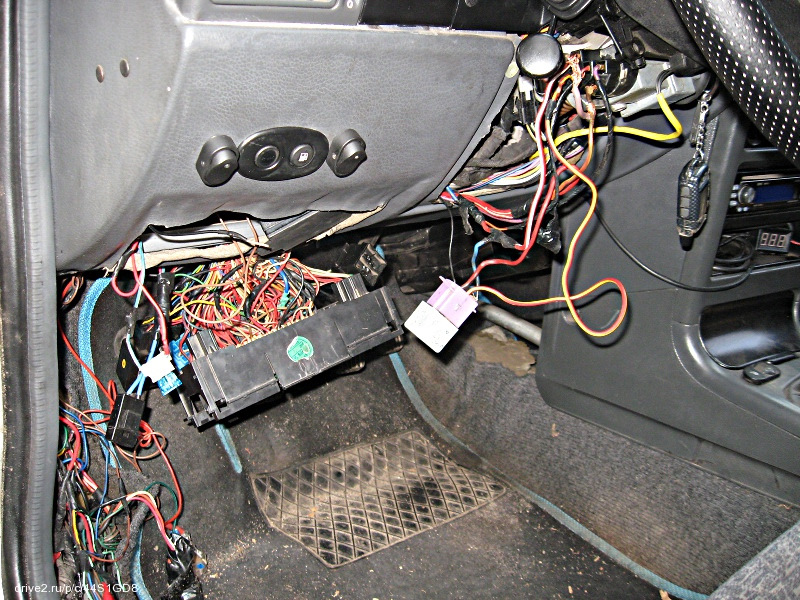
We need a four-square wire. More, I think, is not necessary. Multicolored.
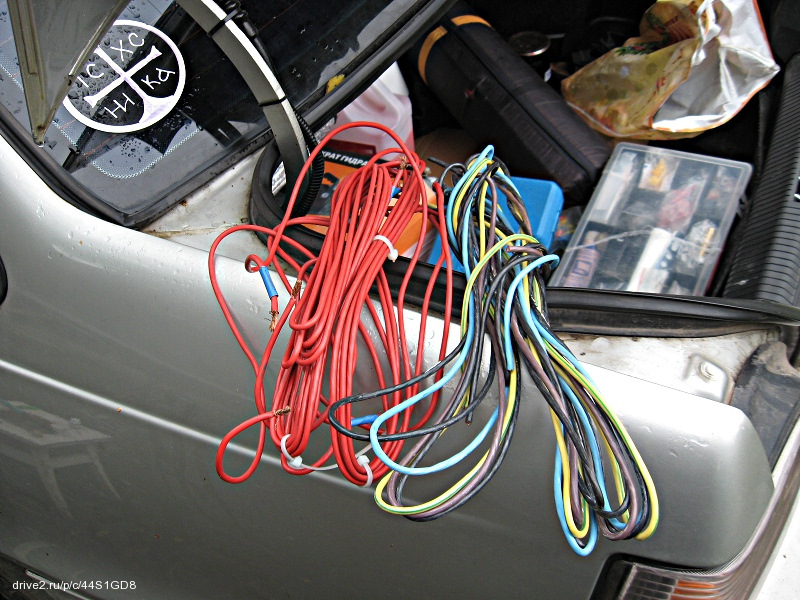
We also need an old stool, one of those that are not a pity; relay; block; terminals; extension; duckling; soldering iron 40 watts, for soldering wires with terminals; soldering iron 100 watts, for soldering power twists; and other soldering junk.
Let's start. We will cut one wire at a time so as not to get confused. Spikes cut off, cleaned and make new ones. But only the ones you need. Let me remind you that for some reason lines 15 and 15a are connected in two places. Big power adhesion and small twist. In short, the excess must be removed, and the necessary should be left. Just to understand what is what.
In order not to get completely confused in the intricacies left by electricians, we need coffee.
And here is the first new wire is ready. We change all the burnt parts of the wiring.
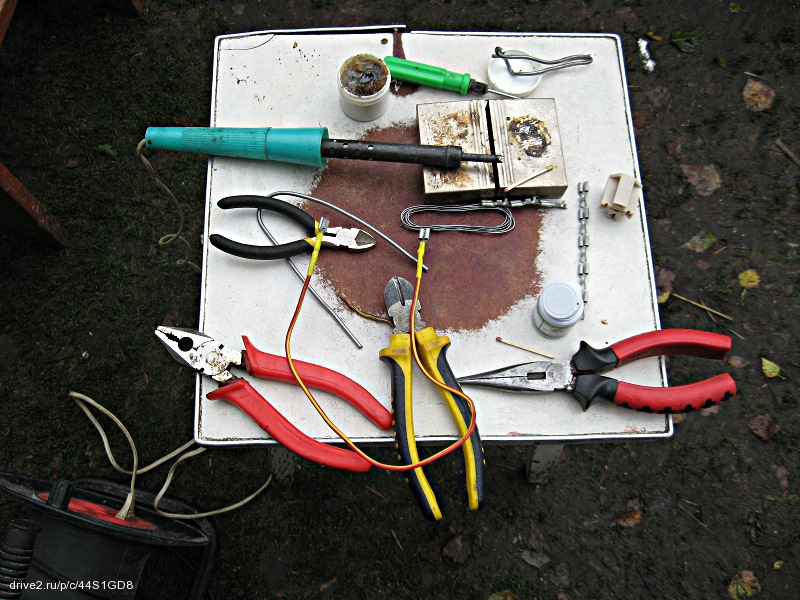
Let the non-power part of the contact group remain as it is, if it has not burned, of course. The terminals should only be pressed additionally, you must not forget. So that the plug of the contact group does not melt. Because where to get a new plug, in which case I don’t even know. Changing the relay block is not a problem, there are plenty of them on the market.
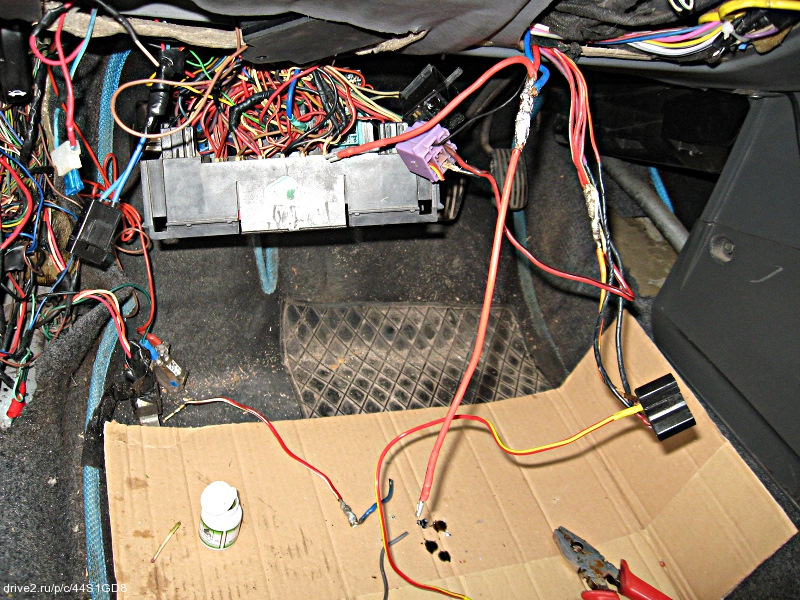
Here's some progress at work. Almost all wires are in place. Already a new block of the unloading relay and a new relay. We try to use multi-colored wires. And where are the same (red), if the purpose of the wires is different, then we use heat shrink of a different color.
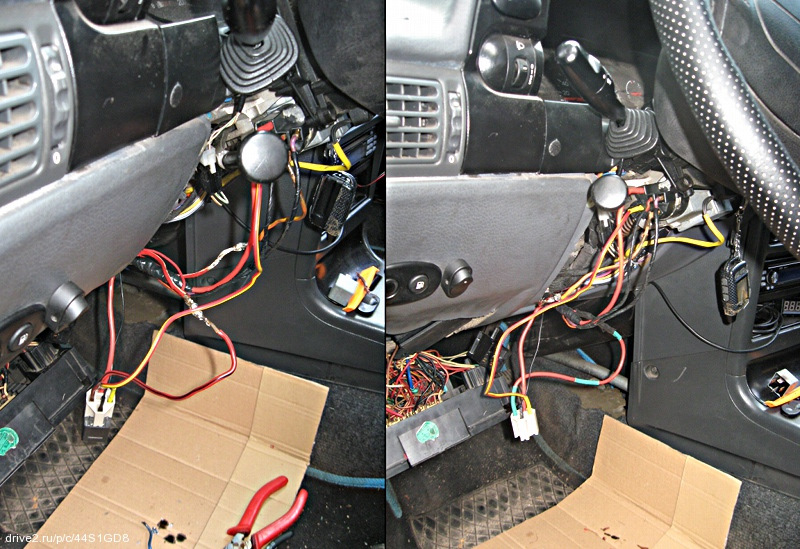
As I did not put cardboard, it was not possible to save the mat from a few drops of solder. But there is no one to blame. At the service station, I'm sure they would freeze.
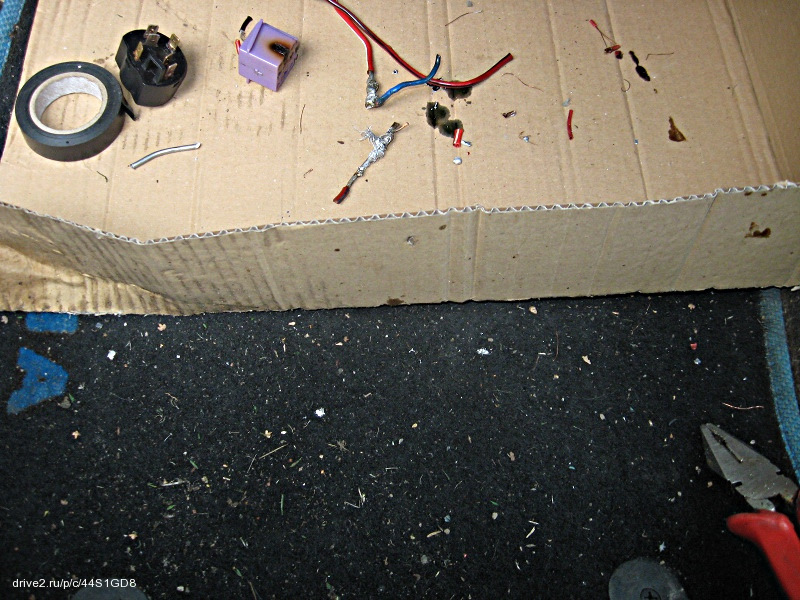
The last burnt piece of wire remained. It goes from soldering to the contact group. We'll replace it and that's it.

Now that's all. Lines 15 and 15a have been disconnected. From line 30, before the unloading relay, one wire goes to the fuse box. From line 15, one wire also goes somewhere, it seems to control some kind of relay (because the wire is thin), it was left. That's how it happened
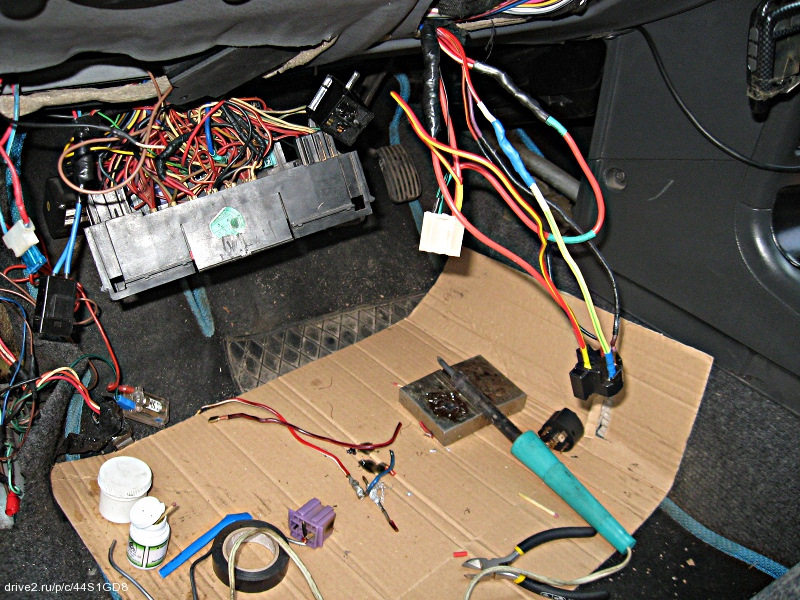
The unloading relay is connected according to the standard scheme for unloading the contact group of the ignition switch to the 15th contact. The car won't start without the relay. Looks like I'll need to have a spare relay in case this burns out. The past has burned down. But there the scheme was somehow unrealistic, it was corrected to the standard one.
I put a new contact group, the radio tape recorder worked (which is generally expected, because I already checked it). And, for the rest, I’ll leave all the wiring like this, I won’t hide and wrap it in electrical tape until I do. I'll go and see what will warm up. And in general, let's see which problems from the above will be treated.
Update 17/08/2016
The engine starts now much better than yesterday. But this is from a charged battery. I didn’t plant him on purpose and have not yet figured out what is planting him. The unloading relay heats up, but not as much as before, now you can take it with your fingers. The fan seems to be on the mend. The turn signals didn't work. The central lock seems to close, failures have not yet been noticed.
Update 21/08/2016
A couple of days the car was motionless, even the key in the lock did not turn. And the battery is not dead, and wound up immediately. But the turn signals still do not work, they even get worse. Turn signal operation is less and less noticeable when lowering or raising the steering column switch. The heater fan is running at speed 3.
Update 02/09/2016
Today, everything related to the wiring of the contact group of the ignition switch is normal: the wires do not heat up, the car starts, the radio and the interior fan work. Even the central locking has ceased to mow and always closes the doors.
Update 08/09/2016
Enough time has passed to judge what was done: it was done normally, the wires do not heat up, which cannot be said about the relay. Well, if so, I wrapped the wiring with electrical tape.
And removed under the panel.
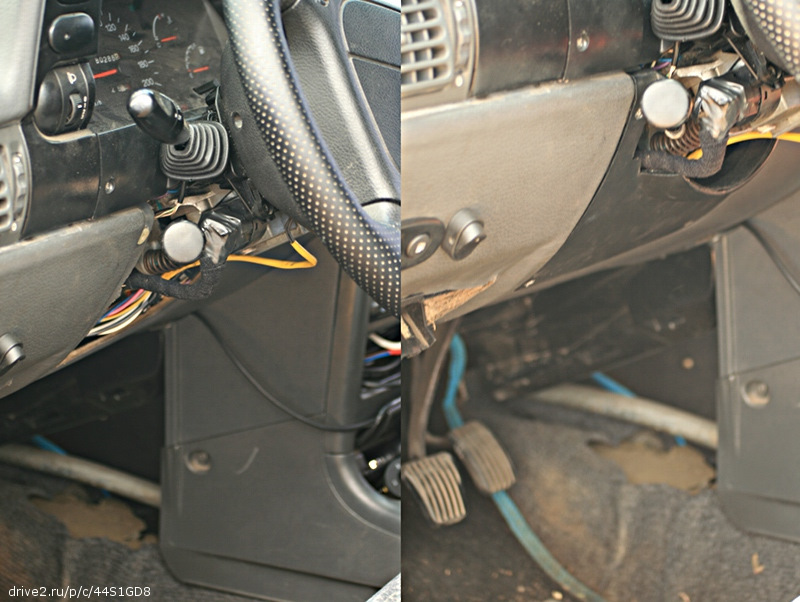
I have not installed the rest of the steering column covers yet, I will lubricate the terminals of the contact group and then I will install them.
Update 21/11/2016
Taking the advice of denelektron, as soon as the turn came to this topic, I thought about a 70 amp relay. Then it turned out that the specified relay from Uncle Scrooge Ford costs a little more than 800 coins in existence, and I, with my natural greed, ordered an analogue for 270 coins. And today this analog has arrived. The relay is in a box, the fastening leg is not dressed on the body. Everything for the people. Then it turned out that the numbering of the legs of the relay that I had and the relay that arrived was different. Those. will not work.

I naively thought that right before the existentialist I would change the relay and forget it. But no, I went home in order to figure out how to connect the relay. Both relays implement the same circuit. Looking closely at the numbering of the legs, I realized that I needed to swap two terminals in the block. And that's it.
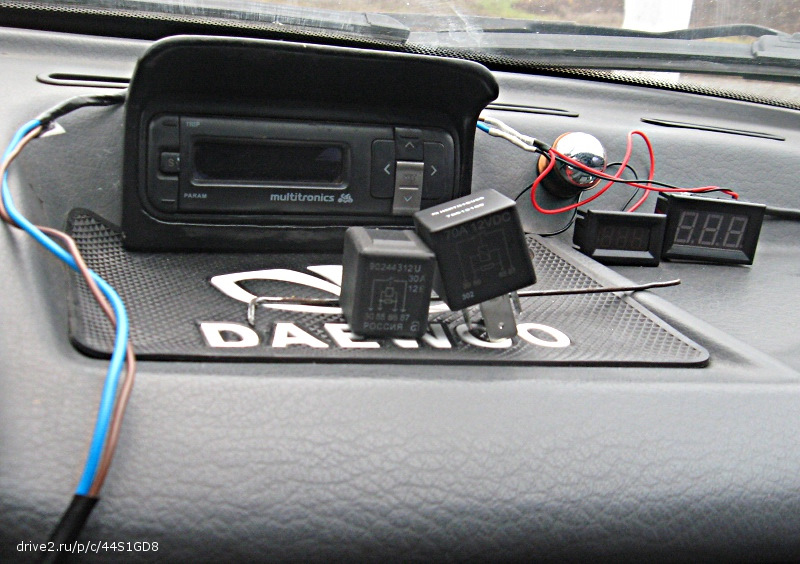
It’s good that I didn’t make it to frost and the wires are still at least somehow bent. Of course, I'm naive, I thought that I only need to bend the locking antennae in the terminal and the wire will fall into my hands by itself, but it didn't happen. The wire did not want to climb out, it was thick and wound into a bundle. Then I realized that I needed a tool, such as pliers, but only with long legs lips. I don’t have this, but I didn’t hesitate to shoot something similar, bulky, but I pulled out the right wire with it.
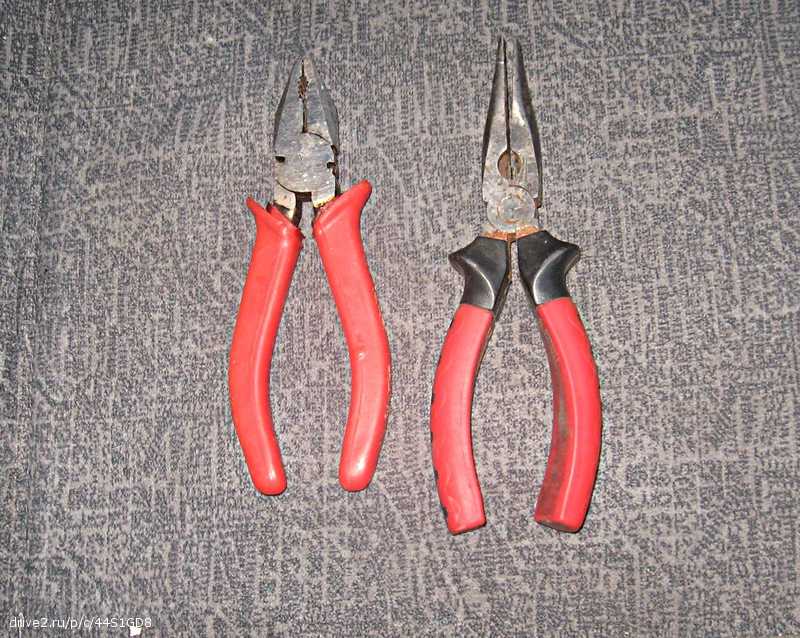
Once again I was convinced that you need to have your own tool, you won’t be full of pliers alone. Nevertheless, I changed the terminals in the block and happily began to shove a new relay into the block. And it doesn't fit! It turned out that the two legs of the Ford relay are wider, really wider than the terminals in the block. And where I looked before, it’s clear, even if you change the terminals - at least don’t change, it won’t fit.
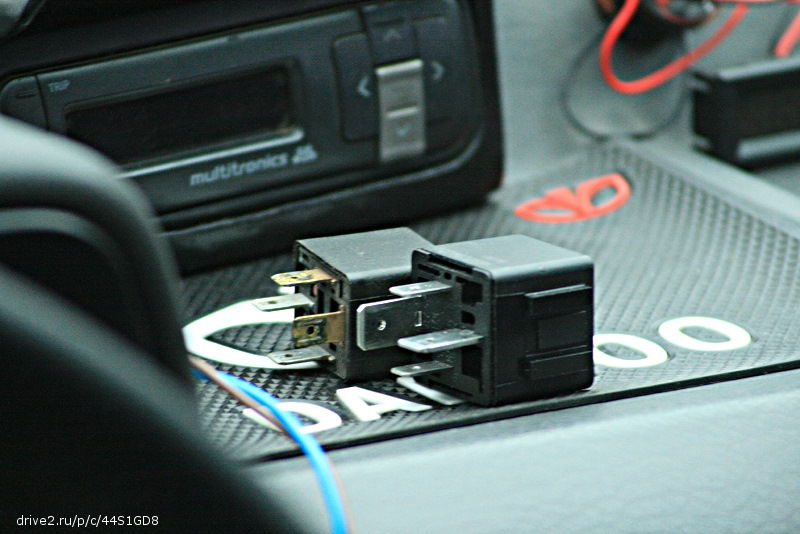
And now I have a task: either to look for such wide terminals, I don’t have them (there are three types of terminals, but they are getting smaller) and connect simply on the terminals and heat shrink, or to look for a Ford block in addition (I would like a block, like humans). But maybe that's all for spring. In the meantime, I found a relay at home with the same arrangement of legs as the Ford one, but it is usually low-power. I once bought it a long time ago, I wanted to connect the pump through it, but I never connected it (but in vain, by the way).
I looked from the side, and broke off the fastening leg with pliers. There is nothing for her to stick around in the panel. For some reason, rush relays are sold immediately with inserted fasteners. So it goes. I will collect the steering column plastic, I will not return here this year.
Mileage: 177893 km




